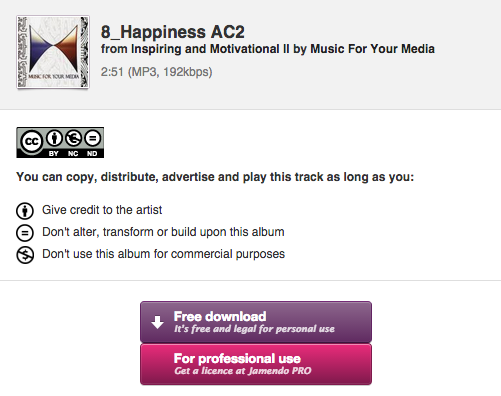For many years, we had a beautiful Golden retriever named Buzz. He was a really lovely dog. We got him through Golden Retriever Rescue NSW and he was pretty special to us. He eventually became quite old and unwell, and we had to put him down last year just before Christmas.
I was a little surprised today when I saw an article on a French news site about a Golden Retriever. It was a fairly sad story of a Golden who went to the vet for an operation and was accidentally euthanised.
Whilst it was a sad story that brought back some painful memories of the night we lost our Golden boy, I was a little surprised that the photo being used was one of my own, taken of Buzz a few years ago. Because I believe in sharing as a default, I published the photo on Flickr under a Creative Commons BY SA licence, as nearly all of my photos are. So this French news site has every right to use my photo as long as they respect the CC guidelines under which I published it, namely the BY (Attribution) and the SA (Share Alike).
While I am very happy to share, and I enjoy seeing my photos being used by others, the CC licence (and general politeness!) requires that I receive attribution and acknowledgement for their use of my image. While they did indeed do this by mentioning my name, it is also usually expected that they would link to the source of the image, in this case the photo on Flickr. This did not happen even though this is the normal thing to do on the Internet when using someone else’s image.
But I was especially not impressed when I clicked the “Photo HD” button to find that they have placed intrusive watermarks all over my photo to prevent anyone else from using it, with a note above it saying “L’accès aux photos HD sans filigrane est réservé aux abonnés”, which translates as “Access to HD photos without watermark is reserved for subscribers”.

This kind of pisses me off, because they do NOT have the rights to restrict access to my image like this, especially when they make it a subscription access thing. Whilst I choose not to use the NC (Non Commercial) aspect of the Creative Commons licensing system – which mean that people can indeed make money from using my photos if they wish – the SA (Share Alike) component means that they must publish under the same licence as they got it. In practical terms, this does effectively mean that my photos cannot be used commercially, since anyone using them has to make them freely available in the same way that I did. But what they are definitely not allowed to do is to restrict others from using them in any way, including watermarks or paywalls. I see this as a clear breach of the terms of my Creative Commons licence.
Anyway, here’s a copy of the email I wrote to them. Let’s see what happens…
Bonjour,
I noticed that you used one of my Flickr images on your story about Golden Retrievers. (https://www.republicain-lorrain.fr/france-monde/2016/12/19/le-veterinaire-euthanasie-un-chien-par-erreur)
The photo is licensed on Flickr under a Creative Commons BY-SA licence, which means you are allowed to use it, but only under two conditions that must be met…
- ATTRIBUTION – You acknowledge the owner of the image. While you have done this by mentioning my name, the more usual way to acknowledge this is to also provide a link to the source of the image.
- SHARE ALIKE – You publish it under the same terms as you got it, and you do not prevent anyone else from using the image. In the screenshot below, I notice that you have covered the HD version of image in watermarks, with a message saying “Access to HD photos without watermark is reserved for subscribers”. This effectively prevents anyone else from using the image without making a payment to you. Because this image is published under a Share Alike licence, you do NOT have the rights to restrict access to it by others, or to suggest that a payment is required.
These conditions are clearly marked on the Flickr page where you found the image.
Those of us who publish our content under a Creative Commons license do so in good faith that our copyright will be respected under the terms of the CC licence we choose to publish with. It is frustrating to find that mainstream media publishers such as yourself either do not understand the requirements of using a CC image, or choose to ignore them.
I am ok with you continuing to use the image, but please remove the watermarks and restrictions in your HD image preview, and provide a link back to the original work. If you cannot do this, then kindly cease using the image.
Please reply to let me know how you plan to deal with this.







